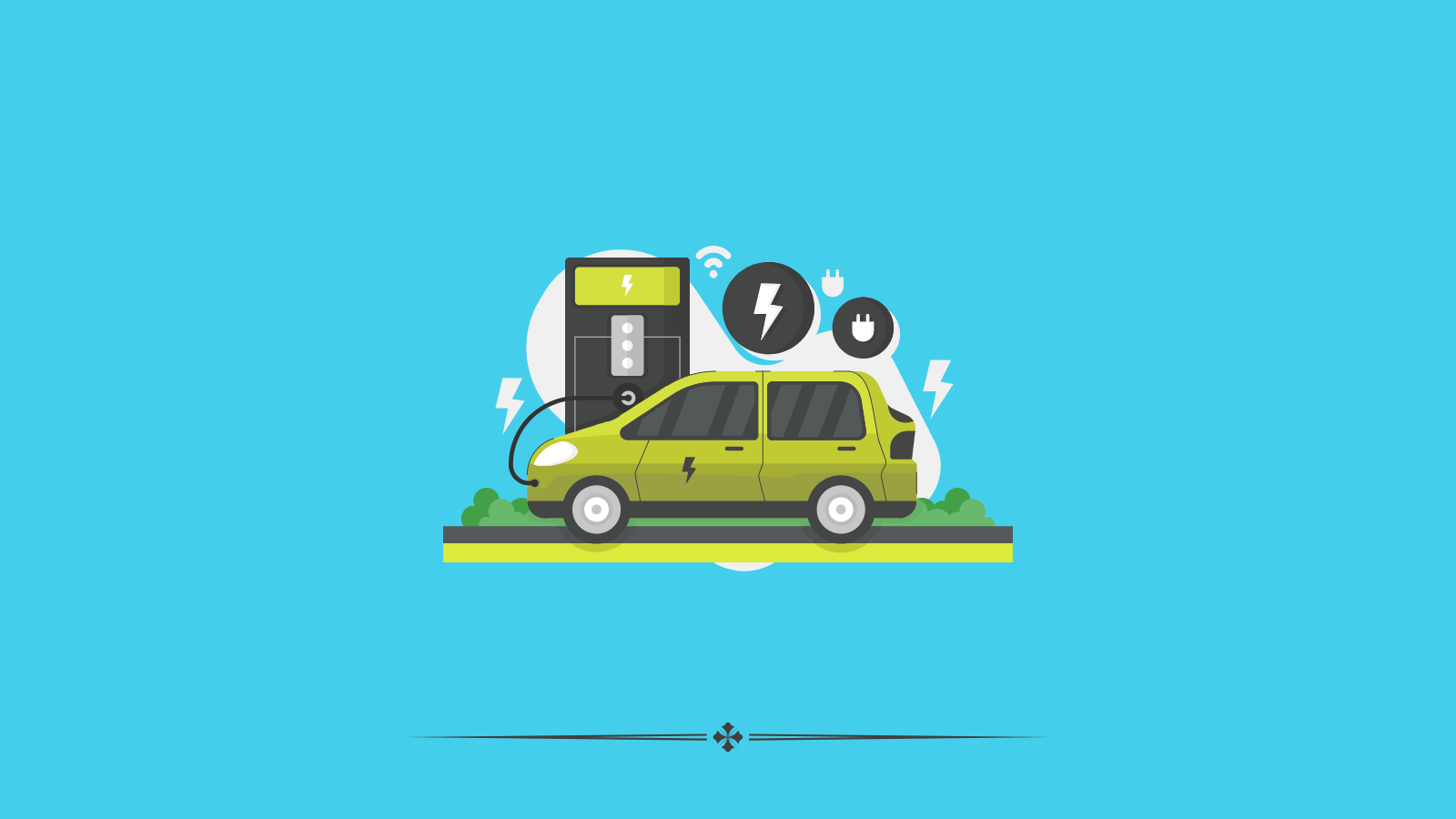The Future of Transport – Zero Emissions, Maximum Impact

With the climate crisis accelerating quickly, reducing our greenhouse gas (GHG) emissions is an agenda we can no longer ignore. Transportation is one of the critical areas in which we need to act fast.
Fortunately, calls to the most prominent industry players no longer fall on deaf ears. We’re seeing gradual shifts from fossil fuels to greener and cleaner options.
The once-distant dream of cities with clean air, clear skies, and quieter streets is rapidly becoming a reality, thanks to electrification, sustainability, and innovations leading toward zero-emissions transportation.
Eager to learn more about the trends shaping the future of transportation? Read on the
Chapters
Vehicle Electrification

Electric vehicles (EVs) are no longer a futuristic concept – they’re already on the roads, growing in popularity as manufacturers make them more affordable.
Powered entirely by batteries and with fewer moving parts, these vehicles have zero tailpipe emissionsand operate without the roar typical of cars equipped with internal combustion engines.
Put simply, they don’t contribute to air and noise pollution while keeping their maintenance costs low.
New and Better Ways to Charge EVs
Lengthy downtime for recharging is one of the biggest challenges with EVs. To address this problem and keep pace with the growing number of EVs, automakers and public transit authorities continue to invest in quality charging infrastructure. The pantograph charger is one of the exceptional innovations in this domain.
Imagine a system where electric buses and trucks can quickly top up on e-juice without plugging in. That’s the beauty of a pantograph solution. This overhead charging system automatically connects to vehicles, making the process seamless and efficient.
It’s also highly scalable. The devices can be set up in various locations, ensuring public transport systems can run nonstop without concerns about losing power.
Hydrogen Fuel Cells
Hydrogen fuel cell vehicles are another zero-emissions transportation option. Instead of gas, they use hydrogen gas to generate power and only release water vapor as a byproduct. This makes them genuinely clean and green
Hydrogen fuel cell technology shows much promise for big vehicles like trucks and buses, where heavy batteries and long charging are genuine problems.
Shared Mobility Solutions

Concepts like car-sharing and ride-hailing services are similarly making a big impact on transportation sustainability.
By reducing the number of vehicles on the road, these shared mobility services help cut down on traffic congestion and emissions.
It’s also worth noting that such services will only become more eco-friendly in the future as more and more companies switch to EVs, hydrogen-powered cars, or even hybrid vehicles.
Autonomous Vehicles.
While still in various testing stages, autonomous vehicles (AVs) represent another major trend that could redefine the future of transportation.
These self-driving cars promise numerous benefits, including improved road safety, optimized traffic flow, and reduced emissions.
As they can communicate with each other and traffic infrastructure, AVs should be able to minimize fuel consumption (or electricity in the case of EVs) and further mitigate the environmental impact of road travel.
Sustainable Urban Planning
Automakers can only do so much to make their vehicles environmentally friendly. On top of green transportation, sustainable urban planning is also essential to support a cleaner, greener transportation industry.
We’re seeing cities investing heavily in developing extensive public transit networks, bike-friendly infrastructure, pedestrian bridges, and smart traffic management technologies.
Such efforts help in reducing emissions and improving the quality of life for residents, making cities more livable and less dependent on cars.
What This Means for Us and the Environment
With these gradual shifts toward zero-emission vehicles and sustainable transportation trends, the future is no longer bleak for the transportation industry.
As these innovations carry through, we can expect cleaner air, quieter streets, and reduced reliance on fossil fuels – all of which mean more environmental and public health benefits.
As individuals, we can support this transition by choosing sustainable transportation options, advocating for better public transit, and staying informed about the latest developments in green technology.
Together, we can drive the change towards a more sustainable future. After all, Earth is our only home.
The Importance of Zero Emissions Transport

Reducing greenhouse gas emissions has become a top priority for governments, businesses, and individuals alike. One of the most impactful ways to address this challenge is by transitioning to zero-emissions transport. Vehicles powered by renewable energy, electric motors, and other zero-emission technologies can significantly reduce the environmental impact of transportation, which is one of the largest contributors to global pollution. Here’s why zero-emissions transport is critical for the future of our planet and society.
1. Reducing Greenhouse Gas Emissions
Transportation is a major source of greenhouse gas emissions, accounting for approximately 14-16% of global emissions. Traditional internal combustion engine (ICE) vehicles powered by gasoline and diesel release vast amounts of carbon dioxide (CO₂) and other harmful pollutants into the atmosphere. By adopting zero-emissions vehicles (ZEVs), such as electric vehicles (EVs), hydrogen-powered cars, and public transit solutions, we can drastically reduce these emissions.
Switching to zero-emissions transport:
- Cuts CO₂ emissions that contribute to global warming.
- Helps countries meet their climate goals under international agreements like the Paris Agreement.
- Reduces harmful air pollutants, leading to better air quality and public health.
The transition to zero-emissions transport is essential for limiting global temperature rise and preventing the worst impacts of climate change.
2. Improving Air Quality and Public Health
Traditional fossil-fuel-powered vehicles emit pollutants such as nitrogen oxides (NOx) and particulate matter (PM), which contribute to air pollution. Poor air quality is linked to a variety of health problems, including respiratory diseases, heart conditions, and even premature death. According to the World Health Organization (WHO), millions of people die prematurely every year due to air pollution, and much of this pollution comes from the transportation sector.
By implementing zero-emissions transport, cities and countries can:
- Reduce smog and air pollution, particularly in densely populated urban areas.
- Improve public health by lowering rates of asthma, lung disease, and cardiovascular conditions.
- Enhance the quality of life for residents, especially vulnerable populations such as children, the elderly, and those with pre-existing health conditions.
Cleaner air not only benefits individuals but also reduces healthcare costs associated with treating pollution-related illnesses.
3. Energy Efficiency and Conservation
Zero-emissions vehicles, particularly electric vehicles (EVs), are significantly more energy-efficient than traditional internal combustion engine vehicles. EVs convert more of the energy from their power source into vehicle movement, whereas gasoline and diesel engines waste a large portion of their energy as heat. Hydrogen fuel cell vehicles, another form of zero-emissions transport, also offer efficient energy conversion with minimal waste.
Energy efficiency means:
- Reduced energy consumption, which is essential as we move towards a more sustainable future.
- Less reliance on finite resources like oil and gas, decreasing the demand for fossil fuels.
- A smoother integration of renewable energy sources, such as wind, solar, and hydropower, into the transportation sector.
By prioritizing zero-emissions transport, we can help conserve energy and create a more sustainable transportation system.
4. Reducing Dependence on Fossil Fuels
The global transportation sector is heavily reliant on fossil fuels, which are finite resources that contribute to geopolitical instability, environmental degradation, and economic volatility. Shifting to zero-emissions transport reduces our reliance on oil and gas, promoting energy independence and sustainability.
Key benefits of reducing fossil fuel dependency through zero-emissions transport include:
- Energy security: Countries and regions can reduce their reliance on imported oil, creating more stable energy markets.
- Price stability: The volatility of global oil prices can impact fuel costs and transportation expenses. Zero-emissions transport, especially powered by renewable energy, can provide more predictable and stable costs.
- Mitigating environmental damage: Fossil fuel extraction and consumption lead to environmental destruction, including oil spills, habitat loss, and water pollution. Zero-emissions transport helps mitigate these damaging activities.
Transitioning away from fossil fuels is a critical step toward building a cleaner, more resilient global energy system.
5. Encouraging Innovation and Green Jobs
The shift toward zero-emissions transport is driving innovation in technologies such as electric powertrains, batteries, and hydrogen fuel cells. These advancements not only improve the efficiency and affordability of zero-emissions vehicles but also create new opportunities for economic growth and employment in the green energy sector.
Investing in zero-emissions transport:
- Supports the development of new technologies that can benefit other industries, such as renewable energy, smart grids, and energy storage.
- Creates green jobs in sectors like manufacturing, infrastructure development, and renewable energy, providing employment opportunities while contributing to environmental sustainability.
- Encourages research and development (R&D), fostering further innovation in transportation solutions.
By embracing zero-emissions transport, we can stimulate economic growth while protecting the environment.
6. Supporting Sustainable Urban Development
Many cities are facing challenges related to traffic congestion, pollution, and urban sprawl. Zero-emissions transport solutions, such as electric buses, bike-sharing programs, and pedestrian-friendly infrastructure, play a vital role in promoting sustainable urban development. These solutions can help reduce traffic congestion, lower noise pollution, and improve the overall quality of life in urban areas.
Benefits of zero-emissions transport in cities include:
- Reduced congestion: Electrified public transportation and micromobility options (e-bikes, scooters) can reduce the number of cars on the road, alleviating traffic jams.
- Lower noise levels: Electric vehicles are quieter than traditional vehicles, contributing to a more peaceful urban environment.
- Cleaner, healthier cities: By cutting air pollution and promoting cleaner transport options, cities become more livable, attracting residents, tourists, and businesses.
Integrating zero-emissions transport into urban planning will be essential for building sustainable, smart cities of the future.
7. Combating Climate Change
Transportation is one of the leading contributors to climate change, and reducing emissions from this sector is vital to achieving global climate goals. Zero-emissions transport technologies, powered by renewable energy, produce no greenhouse gas emissions during operation, making them a critical tool in the fight against global warming.
Key climate benefits of zero-emissions transport include:
- Lower carbon footprint: Reducing transportation emissions helps lower overall greenhouse gas emissions, contributing to climate stabilization.
- Climate resilience: Transitioning to zero-emissions transport reduces the risk of climate-related disruptions, such as extreme weather events, which can affect supply chains and infrastructure.
- Meeting climate targets: Many countries have committed to reducing their emissions in line with the Paris Agreement. Zero-emissions transport is a key strategy for achieving these targets.
Shifting to zero-emissions transport is one of the most effective ways to slow the progression of climate change and protect the planet for future generations.
Conclusion
The transition to zero-emissions transport is essential for addressing some of the most pressing global challenges, including climate change, air pollution, and fossil fuel dependence. By reducing emissions, improving air quality, and promoting energy efficiency, zero-emissions vehicles can lead to a cleaner, healthier, and more sustainable future. As governments, businesses, and individuals embrace this change, the benefits will extend beyond environmental impact, fostering economic growth, innovation, and improved public health.
Investing in and adopting zero-emissions transport is not just a matter of environmental responsibility; it’s a vital step toward a sustainable future.
Other Interesting Articles
Create more and better content
Check out the following resources and Grow!